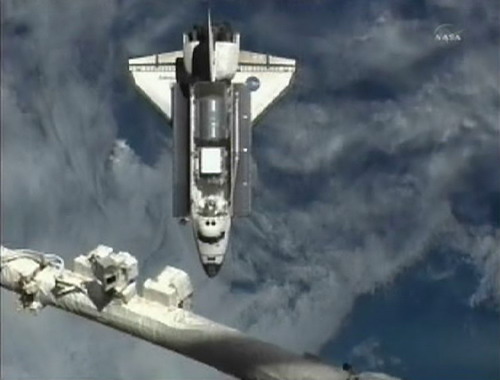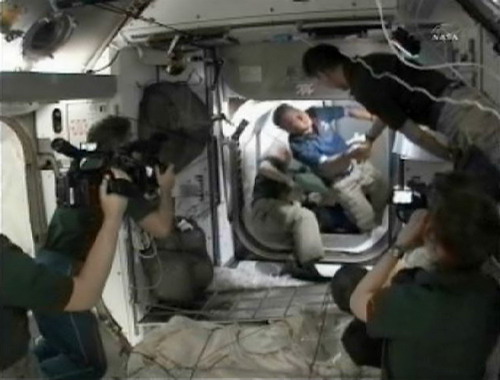Science and Health
Discovery docks at space station on final voyage
(China Daily)
Updated: 2011-02-28 07:24
 |
Large Medium Small |
|
|
CAPE CANAVERAL, Florida - Space shuttle Discovery arrived at the International Space Station on Saturday, making its final visit before being parked at a museum.
"What took you guys so long?" asked Scott Kelly, the space station's commander.
Discovery should have come and gone last November, but it was grounded by fuel tank cracks. It blasted off on Thursday with just two seconds to spare after being held up by a balky ground computer.
"Yeah, I don't know, we kind of waited until like the last two seconds," said shuttle commander Steven Lindsey.
The linkup occurred 355 km above Australia.
Discovery - flying on its final voyage - will spend at least a week at the orbiting outpost. It's carrying a closet-style chamber full of supplies as well as the first humanoid robot to fly in space.
Altogether, there are 12 people aboard the joined spacecraft, representing the United States, Russia and Italy. And in a historic first, four of the five major partners have vessels docked there right now, including cargo ships from Japan and Europe. The entire conglomeration has a mass of 10.54 million kilograms, including the shuttle.
It took longer than usual for the hatches to open because of a slight misalignment between the shuttle and station that needed to be corrected. The two skippers shook hands when the doors finally swung open, and there were hugs all around.
|
|
Discovery - the first to perform the somersaulting maneuver, back in 2005 - is the first in the fleet to be retired this year. Endeavour and then Atlantis will close out the 30-year shuttle program by midsummer.
Discovery is the oldest of the three and the most traveled, with 143 million miles logged over 39 flights and 26 years.
The robot launched aboard Discovery - Robonaut 2 or R2 for short - will remain at the space station, all boxed up for at least another few months. It's an experimental machine from the waist up that will be tested before attempting simple jobs inside the orbiting complex.
Associated Press
| 分享按钮 |

